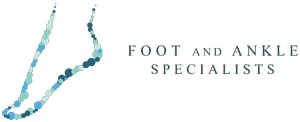By Brianna David, DPM
Table of Contents
**Please note that this article is intended to informative, not diagnostic. A diagnosis can only be made once we’ve had the chance to inspect and observe your feet in person. If you’ve noticed any of these changes in your feet, please make an appointment to discuss your concern with a physician in one of our locations throughout West Michigan.**
Introduction
You should never forget about your feet. Not only do your feet support you day-in and day-out, but they can also act as a window into your overall health.
Early warning signs of health issues can show up on your feet first. For example, nerve issues affect the feet first because they’re farthest from our heart and spines. Similarly, our bodies send blood to internal organs and the brain before the extremities, so our feet are readily jeopardized when our bodies experience danger or threats.
Therefore, paying attention to changes in your feet can help you catch serious problems before they manifest elsewhere.
Dry, Flaking, Itchy, or Peeling Skin
Dry, flaking, itchy, or peeling skin may be a sign of a thyroid condition or a fungal infection. Dry, cracked or flaky skin around the heel or on the ball of the foot could signal a thyroid condition. Other symptoms associated with thyroid conditions are weight gain, numbness in the hands, and vision problems. Itchiness and peeling are signs of athlete’s foot, though they could also be symptoms of eczema or psoriasis.
Balding or Hairless Feet and Toes
Balding or hairless feet and toes may be a sign of circulation problems such as peripheral arterial disease (PAD). While men tend to have more toe hair than women, we all tend to have fine hairs on our toes and feet. Losing this hair could be a sign of poor blood flow, and one cause of this is PAD. Leg pain and cold lower legs are also symptoms of PAD.
Foot Numbness
Foot numbness may be a sign of circulation problems like PAD, peripheral neuropathy associated with type 2 diabetes, other neurological problems, arthritis, or long-standing alcoholism. If you experience foot numbness regularly, especially while you’re active, you shouldn’t ignore it.
Neuropathy is a complication of nerves that is caused by diabetes. It damages the skin and causes loss of sensation in the feet.
Toenail Discoloration
Black spots or lines under your toenails
Yellow toenails
Yellow toenails could be a sign of a fungal infection like athlete’s foot, especially if accompanied by brittleness or flaking. They could also mean that you’ve been wearing toenail polish for months in a row, without a break. As mentioned in our recent skin care tips blog post, some nail polishes contain formaldehyde, which can turn your nails yellow.
Yellowness can also occur naturally with age.
Morning Foot or Heel Pain
Foot or heel pain upon standing or rising in the morning may be a sign of arthritis, plantar fasciitis. If you pain occurs with the first steps out of bed, it could be related to one of these conditions.
Foot Cramping
Sores or Wound
Cold Feet
Feet that are always cold may be a sign of hypothyroidism, poor circulation (PAD), or Raynaud’s disease. Hypothyroidism is also associated with hair loss, fatigue, unexplained weight gain, and depression. If your toes are cold and turn colors (white, blue, or red), it could be due to Raynaud’s disease. This is a common condition in which blood vessels spasm and constrict when experiencing cold temperatures.
Enlarged Big Toe
Increasing Foot Pain
Changes In Your Gait
Swelling
**Please note that this article is intended to informative, not diagnostic. A diagnosis can only be made once we’ve had the chance to inspect and observe your feet in person. If you’ve noticed any of these changes in your feet, please make an appointment to discuss your concern with a physician in one of our locations throughout West Michigan.**




